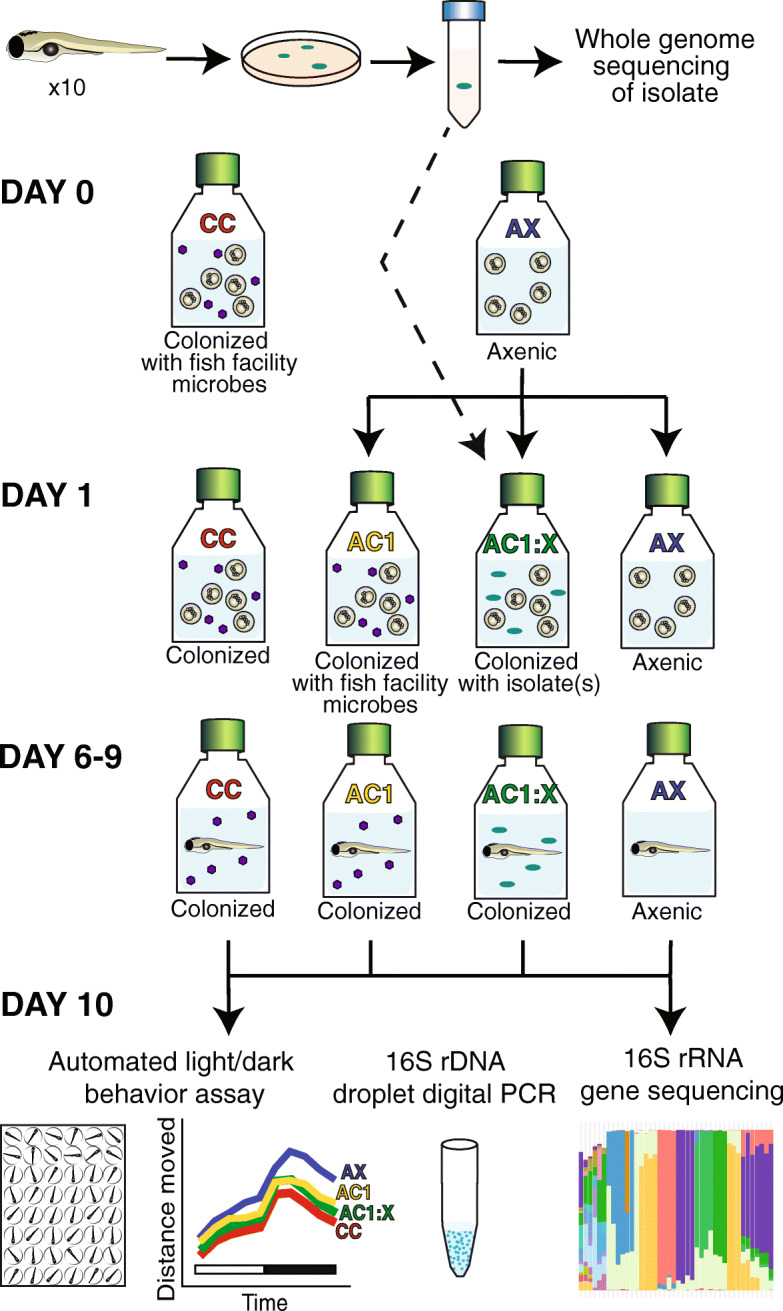Fig. 1.

A zebrafish experimental system with different colonization statuses. To generate host-associated bacterial isolates, visually pure isolates were grown from homogenized zebrafish larvae and then underwent whole genome sequencing. To examine the effects of colonization status on behavior, larvae were generated to be conventionally colonized (CC), axenic (AX), or axenic colonized on day 1 with either aquaculture facility microbes (AC1) or isolated single or mixed bacterial species (AC1:X). At 10 days post-fertilization, larvae were assayed for behavior, bacterial identity (i.e.16S rRNA gene sequencing), and bacterial concentration (i.e. 16S rDNA droplet digital PCR). Purple hexagons indicate heterogeneous aquaculture facility microbes. Turquoise ovals indicate strains of microbes isolated from zebrafish used for association experiments
